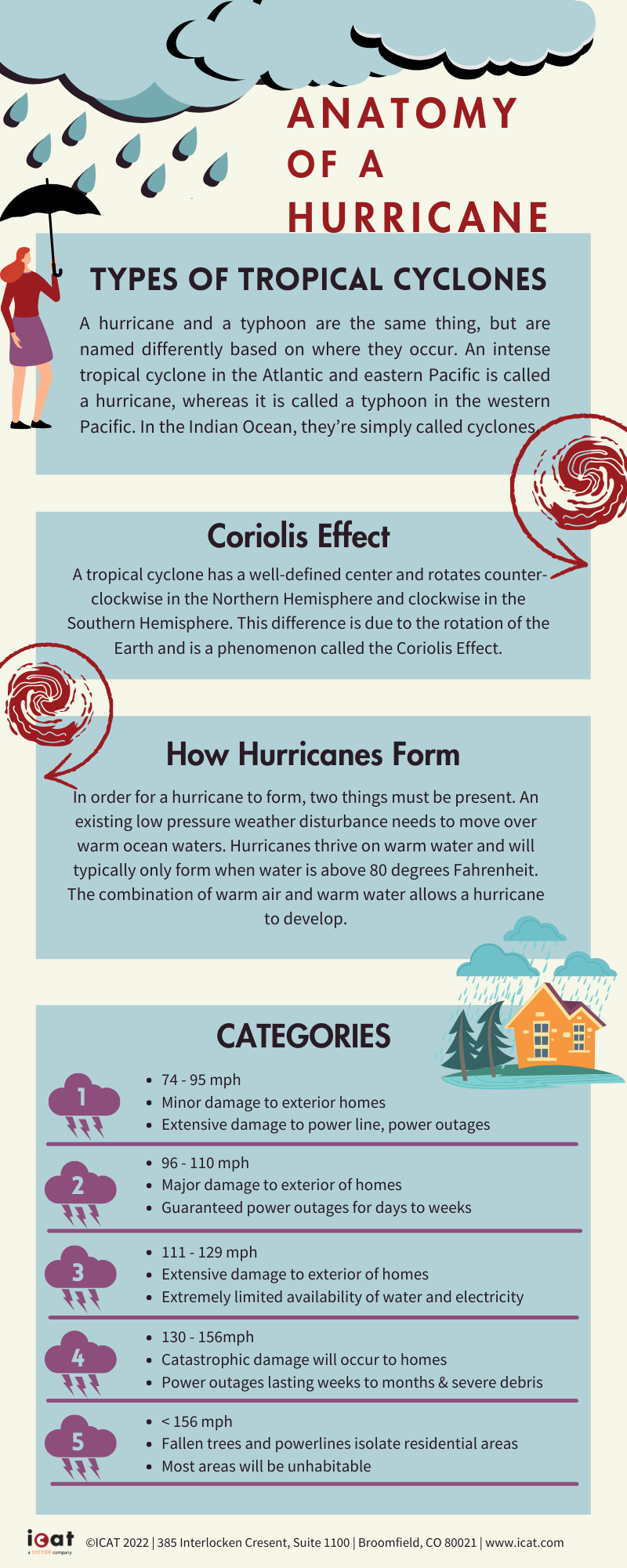What Is the Diameter of a Typical Hurricane
What is the size of the typical hurricanetropical cyclone. The eye of the hurricane a region of calm and light winds at the center of the storm typically forms when the windspeeds reach 138 kmhr or 85 mph.

Archived Environment And Climate Change Canada Weather And Meteorology Learn About Hurricanes Structure And Motion
The typical diameter of the storm is on the order of 650 km whereas the typical eye diameter is less than 50 km.

. The eyewall surrounding the eye is composed of dense clouds that contain the highest winds in the storm. A mature hurricane may have a diameter anywhere from 150 km to 1000 km 620 miles with sustained wind speeds often exceeding 52 ms 115 mph near the centre with still higher gusts. A hurricane is measured using the diameter of the hurricane and the wind speeds that it reaches.
The eye can be as small as a few km in diameter or as large as 320 km in diameter the diameter of Typhoon Carmen. Sea-level pressure near the center of a typical hurricane is. Technically the system is called a tropical storm if wind speeds are between 34 and 63 knots and it is only classified as a hurricane in the wind speed exceeds 63 knots.
The size of the storm is determined by a balance of atmospheric forces the two major ones being the Coriolis acceleration due to the rotation of the earth and the. Slower speed winds further out from the storm center increase the storm systems diameter on average 300 to 400 miles across. The size of a hurricanes wind field is usually a few hundred miles across although the size of the hurricane-force wind field with wind speed.
The largest hurricane in gale diameter winds on record to form in the North Atlantic was Hurricane Sandy 2012 with a gale diameter of 870 miles 1400 km The longest-lasting hurricane was the 1899 San Ciriaco hurricane which lasted for. Hurricane winds and storm surges are most intense on the. The winds of a hurricane are very light in the center of the storm blue circle but increase rapidly to a maximum 10-50 km 6-31 miles from the center red ring and then fall off slowly toward the outer extent of the storm yellow ring.
950 mb is an expected pressure of an average hurricane although pressures below 900 mb have been recorded. The diameter of a typical hurricanes is about ________ that of a tornado. Hurricane Size Typical hurricanes are about 300 miles wide although they can vary considerably as shown in the two enhanced satellite images below.
Approximately 170 km 100 miles wide. Hurricane Andrew 1992 the most devastating hurricane of this century was a relatively small hurricane. The eye of the average-sized hurricane measures 30 miles in diameter.
The eyewall surrounding the eye is composed of dense clouds that. The first named storm typically forms in early to mid-June the first hurricane tends to form in late June and the first major hurricane forms in mid-July. And the eye of the hurricane is 30 miles in diameter.
On average the diameter of hurricane-force winds is about 100 miles. A hurricane is on average 500 miles wide and 10 miles high and moves forward like an enormous spinning top at a typical speed of 17 knots. Anatomy of a Hurricane Typical hurricanes are about 300 miles wide although they can vary considerably in size.
A large expanse of sea surface is required for the formation of a hurricane about 400 kilometres km 250 miles in diameter. Typical hurricanes are about 300 miles wide although they can vary considerably in size. Size is not necessarily an indication of hurricane intensity.
Right hand side of the storm relative to the direction it is moving. The size and strength hurricanes varies immensely. On average a hurricane measures 100 miles in diameter.
The eye at a hurricanes center is a relatively calm clear area approximately 20-40 miles across. The average size diameter of the eye of a hurricane is 30 km 185 mi. The eye at a hurricanes center is a relatively calm clear area approximately 20-40 miles across.
Based on a 30-year climate period from 1991 to 2020 an average eastern Pacific hurricane season has 15 named storms 8 hurricanes and 4 major hurricanes.

Hurricane Tropical Cyclone Formation Structure And Facts Science4fun

Hurricane Zeta Hammers Gulf Coast With Rain Wind Outages News Dw 29 10 2020

Hurricane Tropical Cyclone Formation Structure And Facts Science4fun

The Time Series Of The Normalized Tropical Cyclone Size Parameter Download Scientific Diagram

Hurricanes This Chapter Discusses 1 Tropical Cyclone And Hurricane Development Structure And Movement 2 Hurricane Damages Warning Systems And Naming Ppt Download

Etched Star Hurricane Hurricane Glass Hurricane Lanterns Hurricane

Hurricane Tropical Cyclone Formation Structure And Facts Science4fun

Introduction To Hurricanes Ppt Download

Hurricane Tropical Cyclone Formation Structure And Facts Science4fun

Miami Hurricane Embroidered Patch Embroidered Patches Miami Hurricanes Hurricane Logo

Hurricanes Typhoons And Cyclones Earth S Tropical Windstorms Live Science

Post Maria A Key Ecosystem In Puerto Rico Faces Slow Recovery Puerto Rico Ecosystems El Yunque National Forest

Top Three Terms To Know For Hurricane Season Nesdis

Vintage Oil Lamp With Eagle Burner Glass Hurricane Oil Lamp Etsy In 2021 Oil Lamps Hurricane Oil Lamps Glass




Comments
Post a Comment